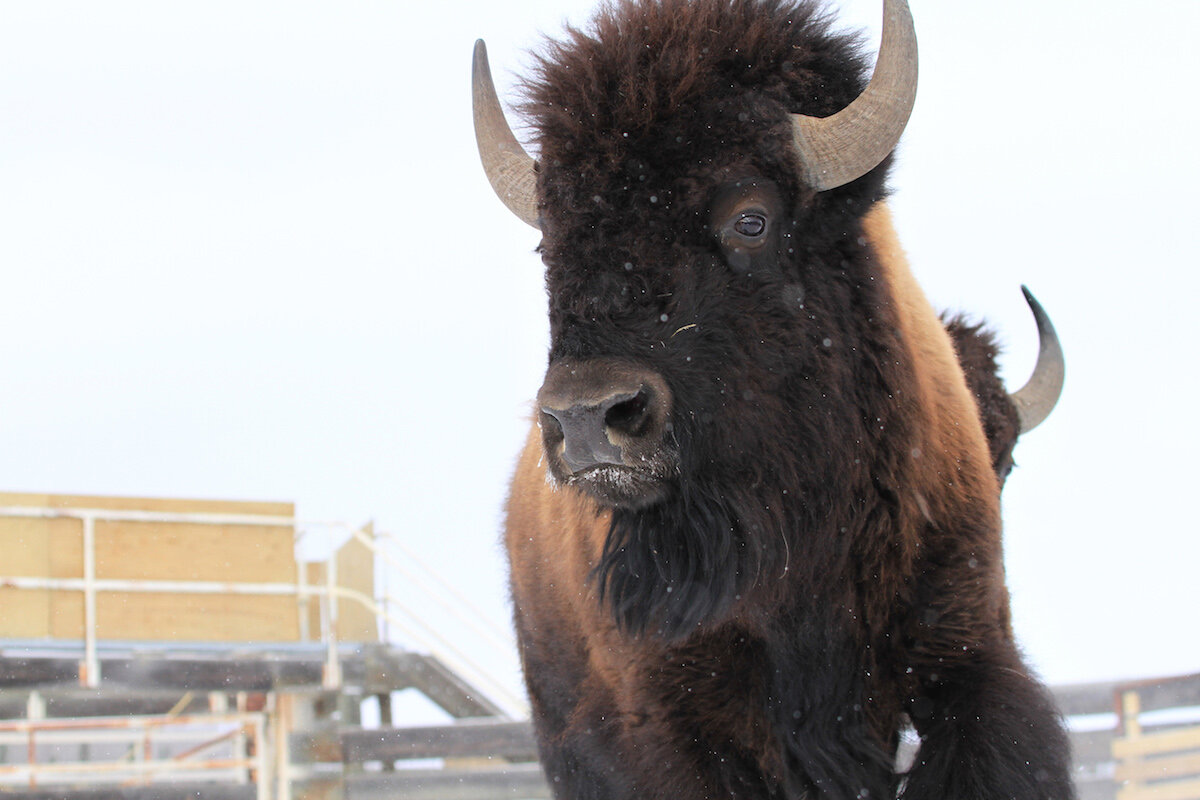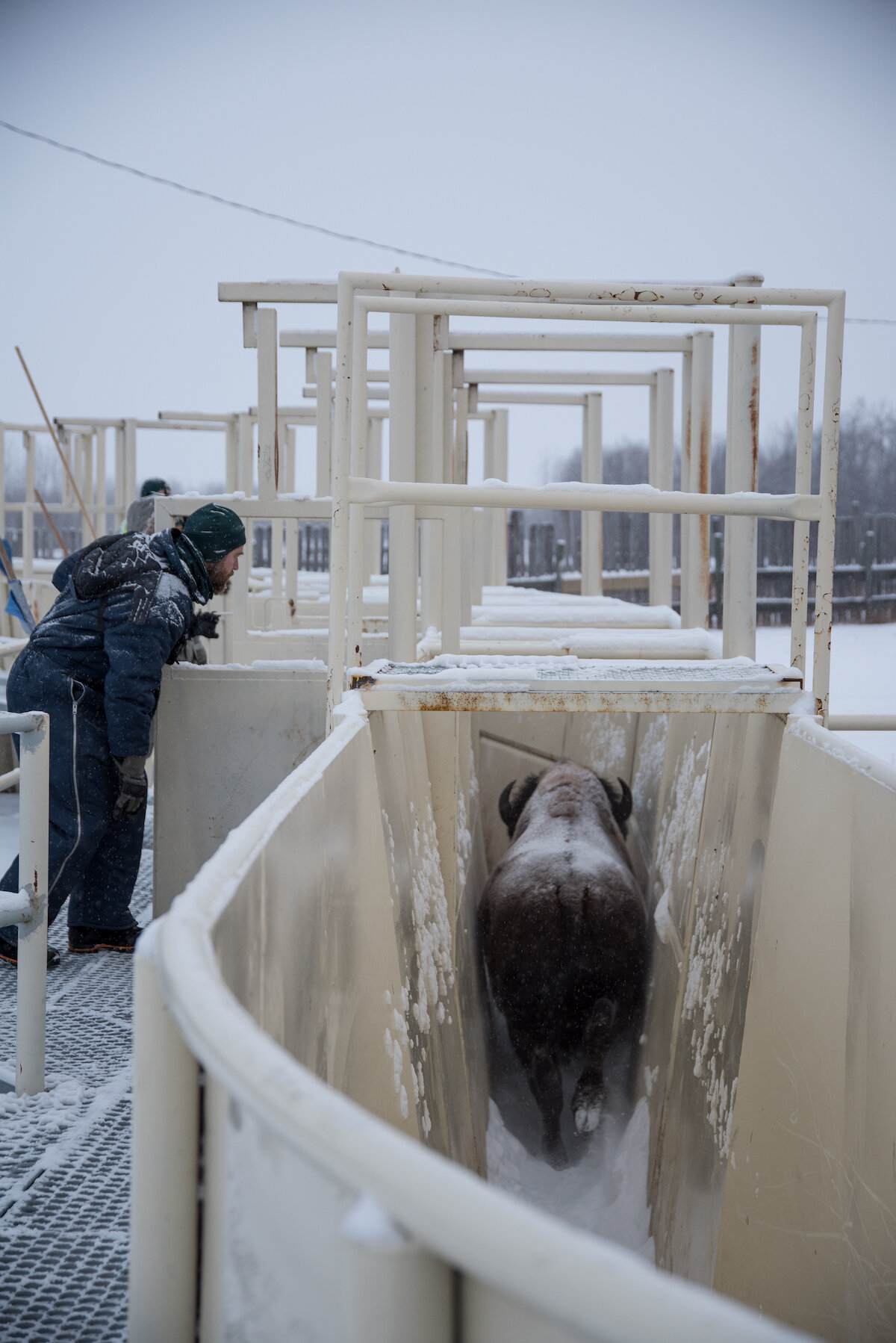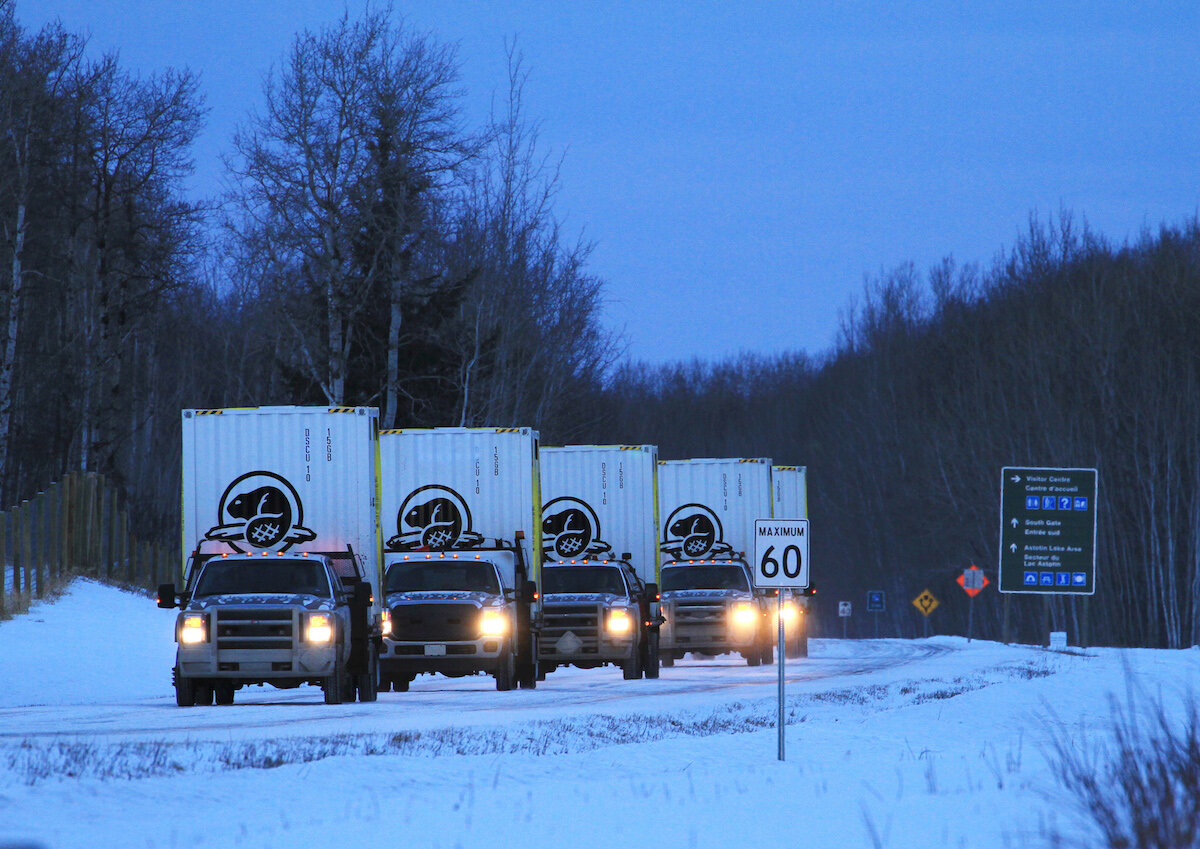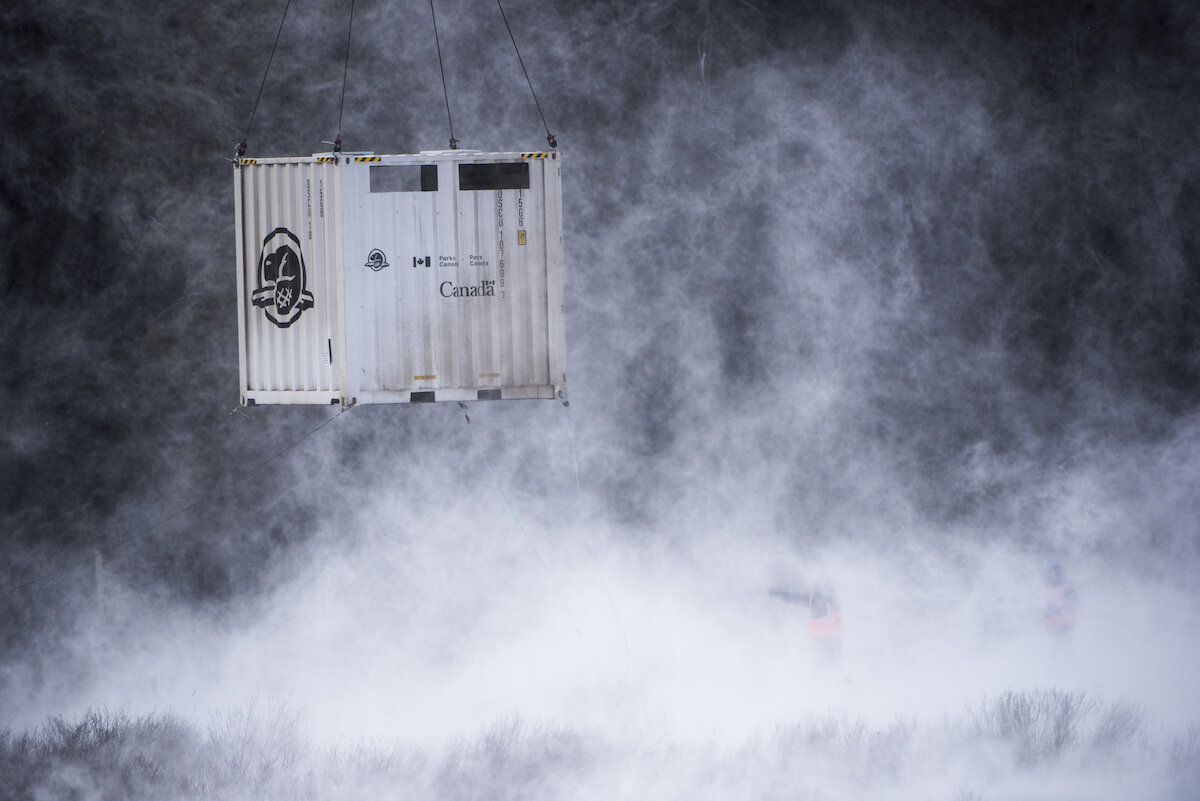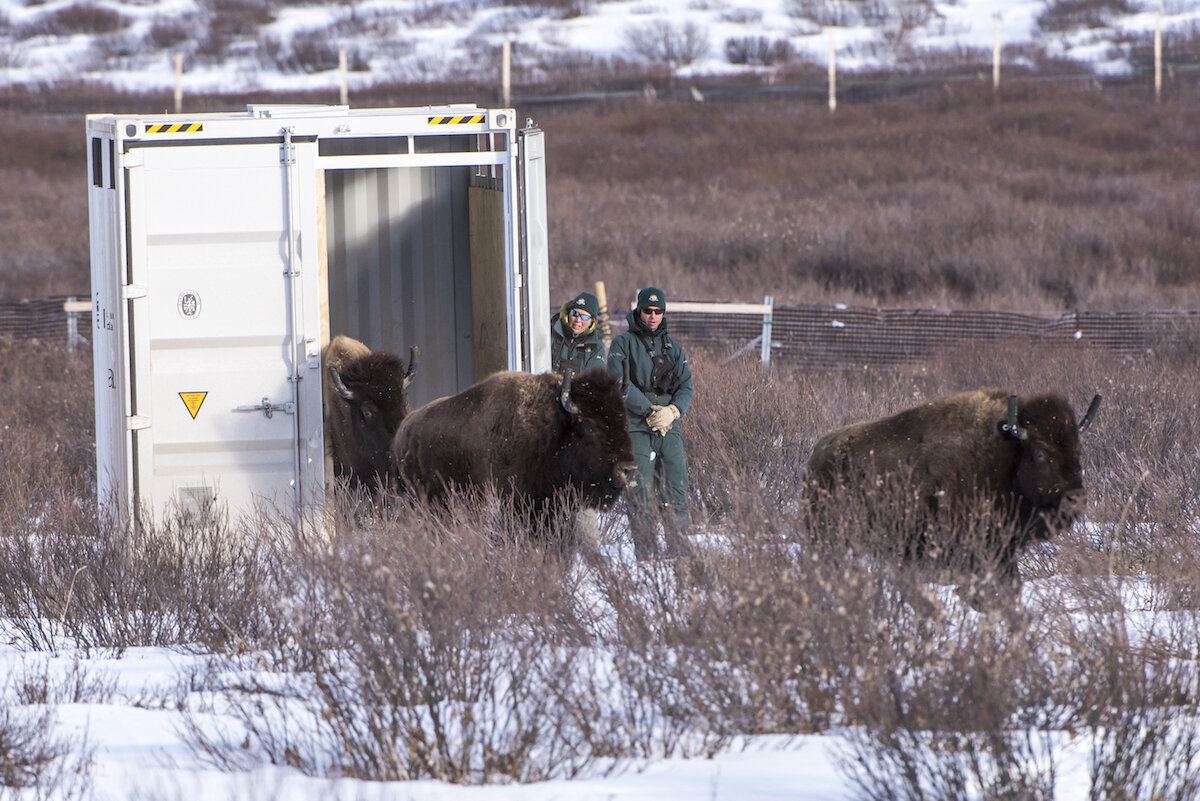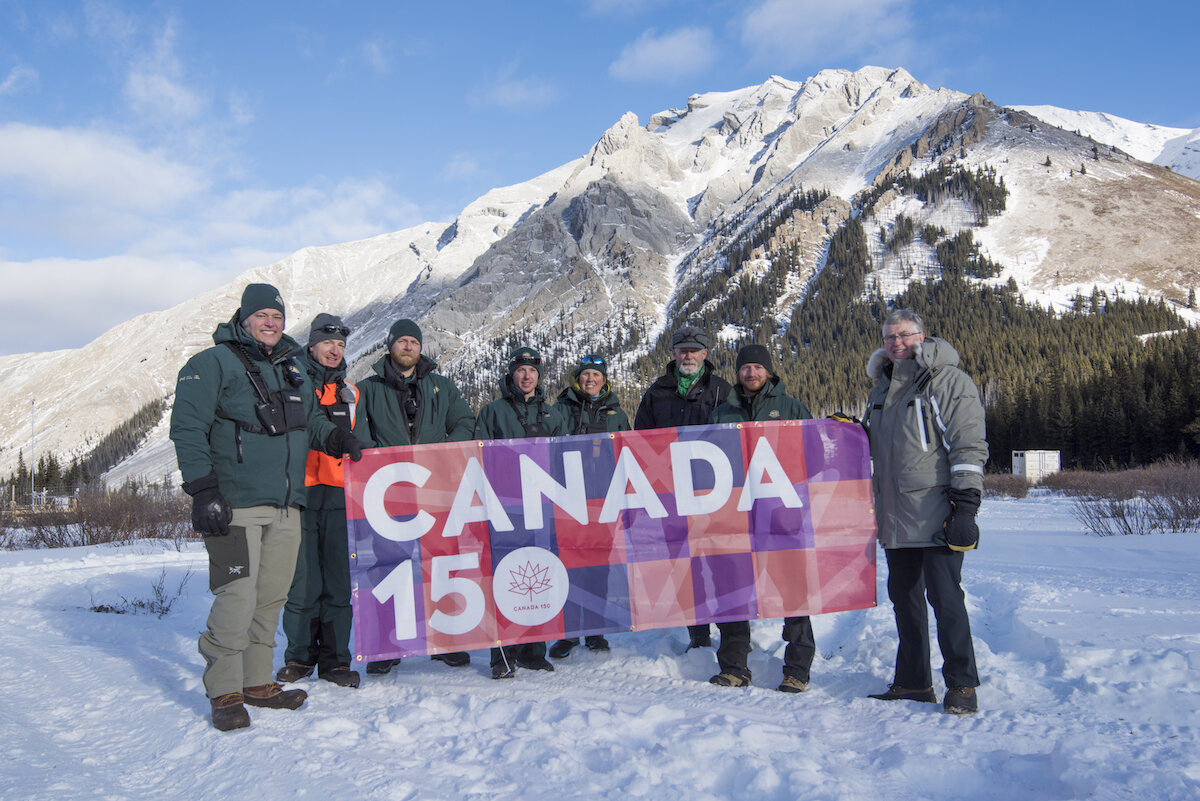REINTRODUCING BISON TO BANFF: A TIMELINE
By Meghan J. Ward
(This article was created with the assistance of Marie-Eve Marchand and Harvey Locke at Bison Belong.)
It has been 140 years since bison roamed free in Banff National Park. But, this month, all that has changed as a small herd of Plains bison was translocated from Elk Island National Park to Banff. With the help of Bison Belong, an organization dedicated to the animal’s reintroduction, we put together a timeline to put this recent success into context.
REINTRODUCING BISON TO
BANFF NATIONAL PARK: A TIMELINE
After years of planning, the time is finally here: Plains bison have come back to Banff National Park! Sixteen Plains bison from Elk Island National Park (near Edmonton) have been translocated to the Eastern Slopes of Banff National Park, in the Panther Valley. Parks Canada will closely monitor the herd and its influence on the landscape throughout the project to inform management decisions (more details are below).
“Today is a great day in the history of wildlife conservation in North America and a great day in the history of Canada’s National Parks,” said Harvey Locke, Trustee of Eleanor Luxton Historical Foundation and author of The Last of the Buffalo Return to the Wild, 2016. “It rights the historical wrong of the elimination of this magnificent animal. The return of bison to the landscape represents hope for nature and is an important step toward reconciliation with Indigenous people.”
It is an important milestone in a long history since bison roamed free in the landscape. With the help of Bison Belong, we put together a timeline to put this recent success into context.
Early 1870s/
Wild plains bison seen regularly in the Bow Valley.
1883/
Last wild bison are seen in the South Saskatchewan watershed (the Bow River is part of the South Saskatchewan).
1885/
Banff Hot Springs Reserve is created.
1887/
Banff National Park created (then called Rocky Mountains Park). Bison gone due to their near extinction in the wild.
1898/
First bison paddock created in Banff to receive a few surviving bison from Manitoba.
1907/
Rocky Mountains National Park Superintendent, Howard Douglas, and Norman Luxton of Banff organize the purchase and round-up of the Pablo Buffalo Herd in Montana, the largest surviving plains bison herd. Ultimately, 708 bison are shipped to Canada (some of which come to Banff in 1911).
1996/
The Banff-Bow Valley study recognizes that the fence around the Buffalo Paddock, combined with other recent developments in and around the Town of Banff, form a serious impediment to the movement of other wildlife in the Banff-Bow Valley.
1997/
Banff National Park Management Plan provides that the Buffalo Paddock fence and captive herd be removed, but also states that the release of wild bison into the park should be studied.
2000/
Canada National Parks Act calls for the restoration of ecological integrity, which includes native species and processes like grazing by bison.
March 2010/
International Union for Conservation of Nature, IUCN, issues a scientific report on the ecology and history of bison in North America. The Canadian release of this document is accompanied by a call to reintroduce wild bison to Banff National Park.
June 2010/
The Banff National Park Management Plan review draft contemplates re-establishment of a wild plains bison herd in Banff National Park.
January 2012/
The Government of Canada and Parks Canada announce the beginning of public consultation on the reintroduction of wild plains bison to Banff National Park.
September-November 2013/
Parks Canada organizes a pan-Canadian public consultation on their plan to reintroduce plains bison in Banff National Park. Over one thousand Canadians participate. Banff National Park commits to moving ahead (subject to funding).
March 2015/
The Government of Canada announces a dedicated fund of $6.4 million for the return of wild plains bison.
February 2017/
Date for the return of the bison in Banff National Park.
May 2017/
First bison babies born in Banff National Park.
Spring 2018/
The bison will be out of the soft release and roam freely in the area detailed in this map.
NOTES
From the day the Plains bison are reintroduced in Banff National Park they will be held in a fenced, soft-release pasture for 16 months. The herd includes a number of pregnant females, who will calve twice in the soft-release pasture to help them ‘anchor’ to the landscape. This will help them to develop a strong bond with the area. It is anticipated the cows will calve twice during this time, increasing the size of the herd to approximately 30 animals. After the first 16-18 months of soft release, the bison will roam a reintroduction zone spanning 1,189-square-kilometres of the Eastern Slopes of Banff National Park.
If you’d like to pay them a visit, it’ll require a multi-day trek: from Lake Minnewanka, along the Cascade River, it should take you three days in to get to the reintroduction area either via North Cascade Pass or through the Dormer Pass and the cut-off to Panther.
The plains bison are all descendants of the Pablo Herd. (Learn more in the book Last of the Buffalo Return to the Wild published September 2016).
Resources: NewsWire.ca, CPAWS, Bison Belong
Meghan J. Ward is a writer, editor, digital content specialist and all-around storyteller based in Banff, Canada. Meghan loves any sport that takes her up a mountain or into the backcountry, and also enjoys travel and photography.

